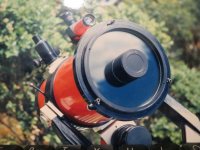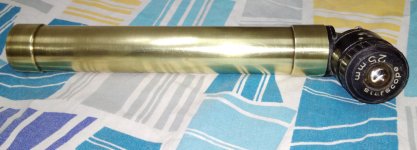Pavel -- I believe the LM7171 is faster than 6171, cheaper, and has greater output current.
But it has input bias current of 10uA, which is too much.
That is not low.
4 dual FETs NSVJ 5908 in parallel dropped 1.5V across the 10 Meg bias resistor
here at room temperature, and that will double every 10°C. Vdd = 3V.
I wanted more of them, and there goes the 10u foil input capacitor * 10 Meg.
Less R, more C. 🙁
IF3602 FETs are much better wrt gate current, even though they are much larger FETs,
but not at their price and input capacitance.
4 dual FETs NSVJ 5908 in parallel dropped 1.5V across the 10 Meg bias resistor
here at room temperature, and that will double every 10°C. Vdd = 3V.
I wanted more of them, and there goes the 10u foil input capacitor * 10 Meg.
Less R, more C. 🙁
IF3602 FETs are much better wrt gate current, even though they are much larger FETs,
but not at their price and input capacitance.
Last edited:
I'm intrigued Pavel, tell us more why you need such low input bias current.
Because of SQRT(2*q*Ib)?
That is not low.
.
Because of SQRT(2*q*Ib)?
For instrumentation yes, but that looked liked an audio amplifier and that was what my question was based on.
For instrumentation yes, but that looked liked an audio amplifier and that was what my question was based on.
I am sure you would not use an amplifier with that level of current noise for anything but less than a few kohm of source impedance. It would double the noise of a 10k resistor.
I did not, but 40 years ago (sounds familiar?) I polished my own 8" parabolic mirror, took me almost 1 year. Also build my own Foucault knife-edge and Ronchi test benches with the slit made out of razor blades, the guys at the fab were so kind to coat my mirror with aluminum in a Balzers electron gun deposition system. I had to clean it myself before deposition though, including a nerve wrecking HF 1:15 dip.
Got stuck in the tracking mechanics and never finished the assembly, but the optics was world class. I still have the 8" parabolic mirror, unfortunately the flat elliptical mirror was lost during a move some 30 years ago...
Me too, sort of wish I had the time back. I still have a box of grits from 90 down to 3 micron moving to cerium oxide polish. This was so silly in 1964, Celestron sold a 1/20 wave f/8 8" mirror for $65.
My Dad was a very good Mech Design Engineer and his hobby was Astronomy. When we were young, in his spare time he spent years in his
workshop building a a fairly complex and strange (to us at the time ) machine that was actually a lens grinding machine. This was the first step in
the larger scheme of designing and building his own telescope - which we were convinced would never happen given the rate of progress.
My amazing Dad sadly passed away last year at the age of 96 however in his retirement years prior, actually designed and completed 3 telescopes, the
largest being a 12". He made virtually every single part of them including the lenses and mirrors (the 12" was a Cassegrain type) frames, drive trains etc etc.
TCD
Attachments
coincidences of dads making telescopes are too many. My dad also built a beginner's Telescope. His friend was in to grinding lenses and mirrors in Dadar(Mumbai). Ours was made from semi kit. Probably brass tube was made by my dad. I made Wooden tripod back then. It had low magnification but the main lens was Achromatic Made in germany lens. So no color aberrations. Other parts were an eye piece and a prism to see comfortablly without bending neck as beginner. He had other plans to make big telescope. 5/6 inches ordinary lens I stll have.
Following picture I took as recently as couple of week back (Full moon festival here). Mind you Moon pic is from Mobile camera placed with steady hand on eye piece.
regards.
Following picture I took as recently as couple of week back (Full moon festival here). Mind you Moon pic is from Mobile camera placed with steady hand on eye piece.
regards.
Attachments
My Dad was a very good Mech Design Engineer and his hobby was Astronomy. When we were young, in his spare time he spent years in his
workshop building a a fairly complex and strange (to us at the time ) machine that was actually a lens grinding machine. This was the first step in
the larger scheme of designing and building his own telescope - which we were convinced would never happen given the rate of progress.
My amazing Dad sadly passed away last year at the age of 96 however in his retirement years prior, actually designed and completed 3 telescopes, the
largest being a 12". He made virtually every single part of them including the lenses and mirrors (the 12" was a Cassegrain type) frames, drive trains etc etc.
TCD
Interesting, great stuff... I wish I had the same mechanical design skills. My telescope was a simple Newtonian. I know next to nothing about polishing lenses, but for mirrors nothing would beat hand polishing. That's because any machine available to us mortals would, because of the tolerances, introduce systematic errors or aberrations in the spherical and later parabolic shapes. Hand polishing is, on the other side, fundamentally random, therefore such systematic errors are naturally avoided. One could imagine a machine that randomizes the trajectories of the upper half, but then I have never seen such. A mirror polishing machine would be useful for the 10% of the work that is preparing the lens for polishing (providing the rough focal distance, preparing the surface for final polishing) but from there you can't beat your hands. The geometric/surface accuracy of a spherical or parabolic mirror has to be better than L/16, meaning a wavefront accuracy of L/8, I got a measured L/19 accuracy which is, at a wavelength of 633nm, about 33nm RMS deviation from the ideal surface, and this includes the aluminum layer roughness, glass surface was likely better. Trivia, the Hubble telescope mirror was (short of the stupid execution error) 10nm RMS accurate, at a size of almost 8ft. in diameter, x3 more precise and x12 larger in diameter, almost unbelievable.
Colleagues at the fab asked me if I volunteer for hand chipping the IC prototypes, those had the minimum feature (contacts) x50 larger than my mirror surface aberration, at the time.
Last edited:
My amazing Dad sadly passed away last year at the age of 96 however in his retirement years prior, actually designed and completed 3 telescopes, the
largest being a 12".
Nice stories and wonderful to be able to enjoy the completed projects, BTW my mother is going on 97 in Feb.
There are some amateur astronomer DIY stories that rival anything in DIY audio. I saw an 8" binocular telescope (perfectly matched optical trains) with a totally counterbalanced mount and chair so the observer could move to any point in the sky with virtually no effort. There was also a guy in Australia that made a 40" reflector with a huge circular catwalk to get at the prime focus.
Trivia, the Hubble telescope mirror was (short of the stupid execution error) 10nm RMS accurate, at a size of almost 8ft. in diameter, x3 more precise and x12 larger in diameter, almost unbelievable.
I took two graduate courses from one of the members of the STSI who tried to save the early Hubble images with all kinds of deconvolution algorithms.
More trivia: we eventually got in the fab some Carl Zeiss projection mask aligners. When I visited their factory in Germany I was surprised to find out that the main mirrors were hand polished by two guys brought out of their retirement, that were manually polishing mirrors and lenses in the same building, at the same benches, with the same tools, since before WWII. Nobody else was able to do the same quality job, even if the polishing process was pretty well understood.
I vaguely remember the same issue with lead screws, apparently there were less than two or three people who could make them.
Given human life expectancy are we approaching the end of essential technology resources? I don't see clever software replacing those skills (or patience).
I think need will drive the redevelopment of certain skills. It's not as if humans are less capable. Some things will certainly be lost to time, though.
I am teaching three of my guys hand lapping to restore some machine tools. The modern advantage is diamond dust. Cuts fast and can be with lots of effort found in a wide range of grits.
I have a souvenir diamond wheel drink coaster integrated circuit fab discard. It also makes an amazing knife sharpener.
I have a souvenir diamond wheel drink coaster integrated circuit fab discard. It also makes an amazing knife sharpener.
Last edited:
- Home
- Member Areas
- The Lounge
- The Black Hole......



